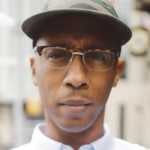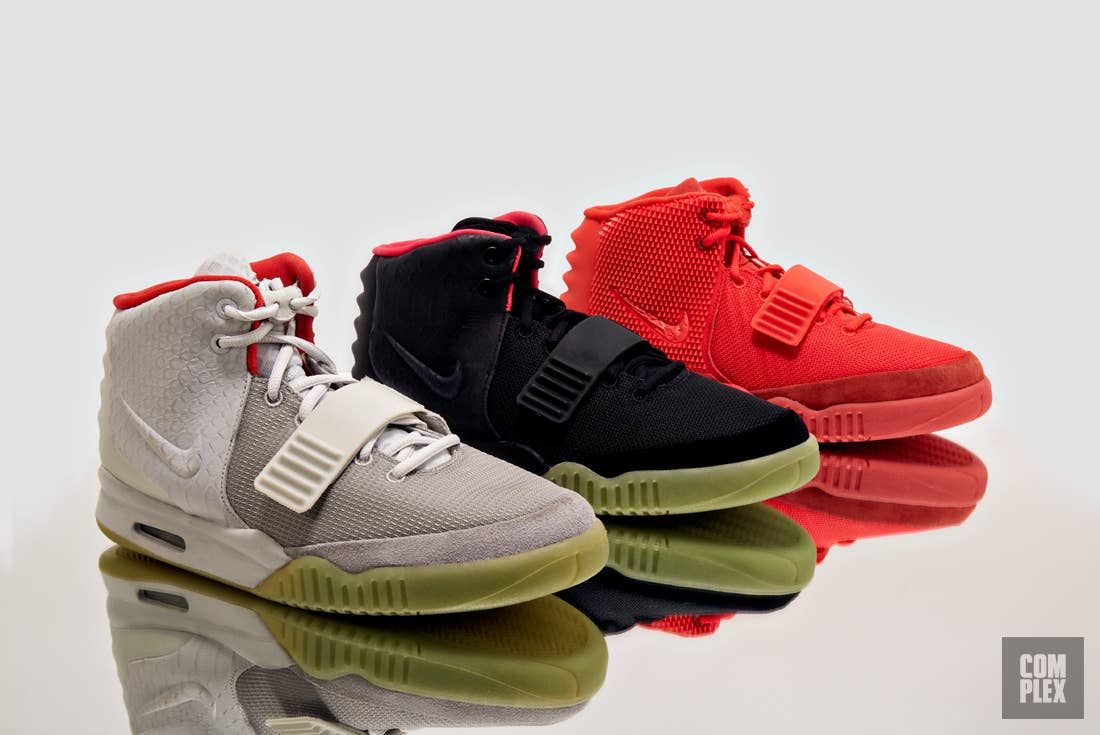
For most people, June 9 holds little significance, but the date may one day ring out for its importance as a major fork in the road for sneaker history. It was on this day in 2012 that Nike released the Air Yeezy 2 for $245, the model designed by Kanye West. It was the shoe that signaled the rapper-producer would be taken seriously in the field of fashion—something he longed for maybe even more than any recognition and fame afforded him in music.
And as it turned out, the Yeezy 2 would lead to the undoing of the relationship between the two powerhouse forces, ruining a union that could have potentially been greater than any other before it. To establish a non-athlete signature shoe line that not only drove sales but impacted the culture would’ve been a huge feather in Nike’s cap and helped the company continue its dominance over the footwear industry. Five years is a relatively short amount of time, yet it feels like a lifetime ago here, given the constant changes Kanye’s undergone coupled with the runaway success he’s had since joining Adidas in 2014.
The first Nike Air Yeezy, originally released in 2009, set the stage for the second iteration, but the two models couldn’t have been more different from each other. The first collaboration between Kanye and Nike was impressive in its own right. The sole utilized the tooling of the Nike Air Revolution, a base close in kin to the Air Jordan III, and the high-ankle collar bore a resemblance to the style seen on the Air Jordan V and VII. But the Air Yeezy 2’s look and style eclipsed its predecessor. Aside from the Air Tech Challenge II midsole, most of the elements — the molded rubber heel, the hieroglyphics spelling out “YZY,” the faux reptile skin, the gold aglets — were fresh takes. They culminated in a final product that manifested a near-perfect marriage of fashion, sport and function. Nathan VanHook, Nike’s lead designer for the model, said, “The anaconda-textured side panel, the toe overlay, the articulated tongue, the inscribed lace toggle — everything was truly looked over by [Kanye], crafted specifically for him.”
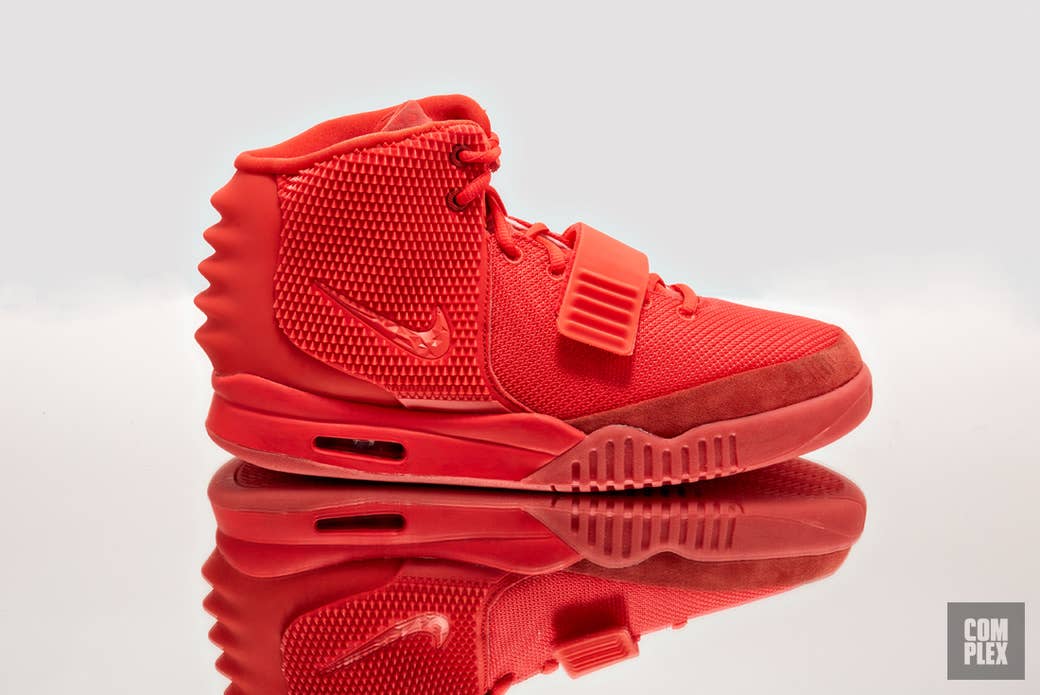
The shoe’s individuality, the way it broke from the mold established by the previous version, was apparent from the outset. “It felt like a truly designed product to me,” footwear designer Brett Golliff says. “The first one was a culmination of parts and just felt like caricature of a shoe. Over-animated proportions with a lack of vision. A one-hit wonder to test the market.” The Yeezy 2, on the other hand, Golliff insists, was “created to be iconic. It wasn't just a culmination of unique features that spoke to Kanye. It was a full-on holistic shoe that tested what materials and proportion can be.”
The refreshing new look captured the attention of footwear fans, and sneaker websites were quick to share any and every update and rumor that found its way onto the Internet. Kanye’s openness in talking about the shoe to the press, pictures of samples finding their way online, and the shoes popping up on the feet of stars like Jay Z and Macklemore only added more gas to the fire. By the time Nike announced release date for the inaugural “Pure Platinum” and “Solar Red” colorways in limited quantities, people were primed and ready to hand over their credit card information in hopes of copping a pair, even at the stiff $245 retail price. Duk-ki Yu, founder and creator at Washington D.C.-based boutique Major, remembers it all too well. “The hype and energy had really hit the ceiling at the time, because of the demand that the original Yeezy created after the initial release when non-sneaker collectors started getting in on the hype,” he says. “Plus the fact that Kanye wore these shoes months prior to any type of release info fueled the hype machine even more. Then you add the fact that West Coast retail got the Platinum colorway, and the East Coast accounts got the black colorway... that just drove everyone crazy. There were a lot of barter/trade talks between guys that work or own the shops, as the desire to get both colors was big on everyone's list. Chicago was perhaps the only market that got both colors. It was crazy.”
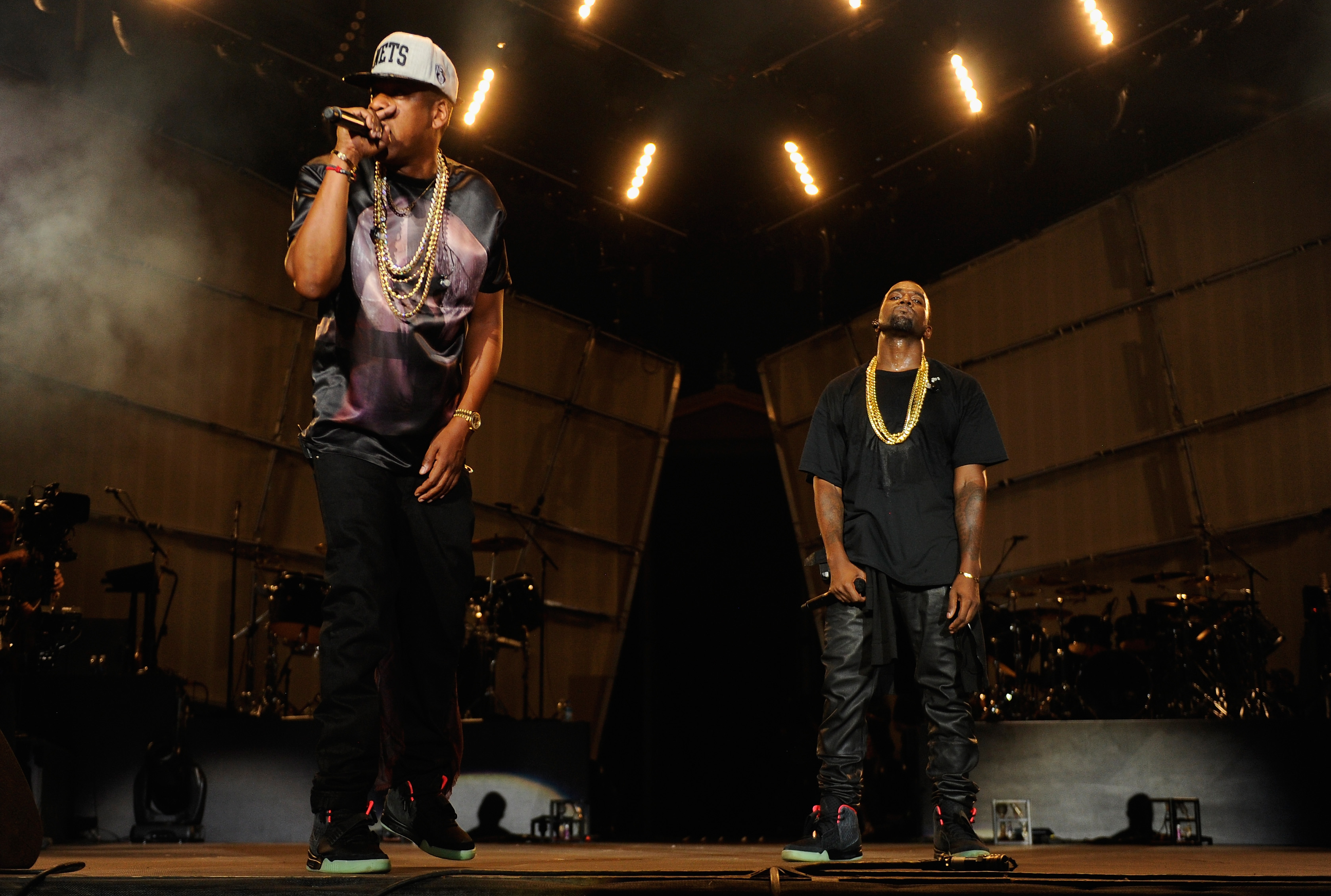
One testament in particular best personified the Yeezy 2’s drawing power. Matt Tomamichel, owner of Cincinnati's Corporate sneaker boutique, decided to do a raffle for the shoe’s release to benefit a local AAU basketball program. “Raising funds for AAU is a non-stop thing and we wanted to help out a shop mentor's program,” Tomamichel said. “We were given the platinum colorway to sell via our shop. For $5 a ticket you were able to buy as many tickets as you wanted. 100 percent of the proceeds were to the program. Not a single dollar over box price was collected.” He estimated they sold over 2,000 tickets to well over 500 people who wanted their shot at the Yeezy 2. A few lucky customers walked away with pairs — and the proceeds amounted to a $10,000 donation to the basketball program.
Despite the buzz, in November 2013, a growing rift between West and Nike came to a head publicly while the rapper was performing nightly for The Yeezus Tour. West had apparently became frustrated with increasing delays with the release of the third slated colorway, the “Red October,” and his widely publicized rants about it became media fodder of the highest degree. He criticized Nike’s handling of the situation, even going so far as to call out company CEO Mark Parker by name on multiple occasions. “They tried to make it as small as possible,” West said of the Air Yeezy at a concert in New York on November 20. “Mark Parker even talked shit, talking 'bout he don't even know why people like the Yeezys. They liked them like they liked the Jordans, because I was in fourth grade getting kicked out for drawing Jordans, for being connected to that emotion as a creative."
Kanye took what would become another parting shot at the Swoosh and Parker during a Yeezus tour stop in Nashville on November 27. “Everyone at Nike...Mark Parker just let go of culture," he told the crowd. “I wanted there to be as many Yeezys as there was LeBrons, and I wanted them to be at a good price, but that was not my choice, and we're going to change everything. I'm going to create more than you think that any musician in the history of time ever could have."
If his relationship with Nike was already strained, those rants didn’t do anything to repair the situation. In fact, they possibly created irreparable damage that brought things to a screeching halt on Nike’s side. “I heard word that the next shoe was already started,” recalls Esaie Witherspoon, who served as the Global Product Line Manager for Nike’s ACG line and Men's Athletic Training during the same the period. “When the rants started, I was like, ‘It’s a wrap ... put a fork in it.’”
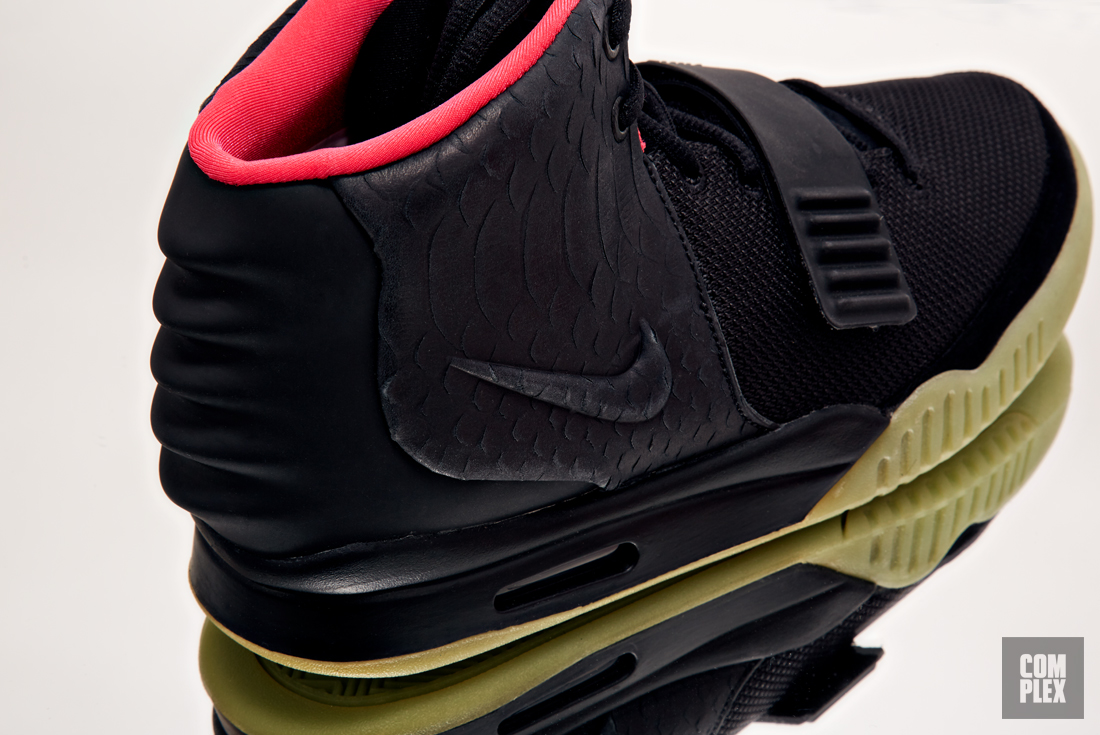
But the fallout with Nike actually wasn’t as much about creativity, availability and price as it was royalties, as Kanye explained duringa radio interviewon New York’s Hot 97 on November 25. The musician felt he wasn’t receiving the right splits for all the Yeezys sold by Nike, especially considering all the sales and attention he was raking in for the company. “Nike told me we can’t give you royalties because you’re not a professional athlete,” West said. “I told them, I go to the Garden and play one-on-NO-ONE. I’m a performance athlete.”
At the time, the rapper had just become a father to his daughter North. He wanted a larger slice of the revenue pie, not just the chance to live out his fashion design fantasies. Although the situation was likely more complex than that, West implied the disagreement over finances was the breaking point. “He told me, without a daughter, would have taken the Nike deal because I just love Nikes so much,” he told Angie Martinez. “But the new me, with a daughter, takes the Adidas deal because I have royalties and I have to provide for my family.”
Kanye ended up leaving Nike and making the move to Adidas, which was in the middle of revamping the brand and about to relaunch its best-selling sneaker, the Stan Smith.
Switching to Adidas was a big risk at the time — the company wasn’t the rising force that it is today. In late 2015, they weren’t just behind long-time rival Nike, they even trailed Under Armour, which notched $1.2 billion in apparel and footwear sales to Adidas’ $1.1 billion through August 2014. Looking to right the ship, Adidas underwent heavy changes, ranging from leadership to design;bringing on Kanye planted the flag for the idea they were ready to not only regain their position but also to make a run for the top slot. Since Yeezy came onboard, the Three Stripes have corrected the course in sales, regaining the number two slot in October 2016 and reporting an industry-leading 30 percent growth through the first quarter of 2017. More subjectively, the company is now widely considered the cooler brand among influencers and the sneakerhead community, a position Nike held captive to for so long.
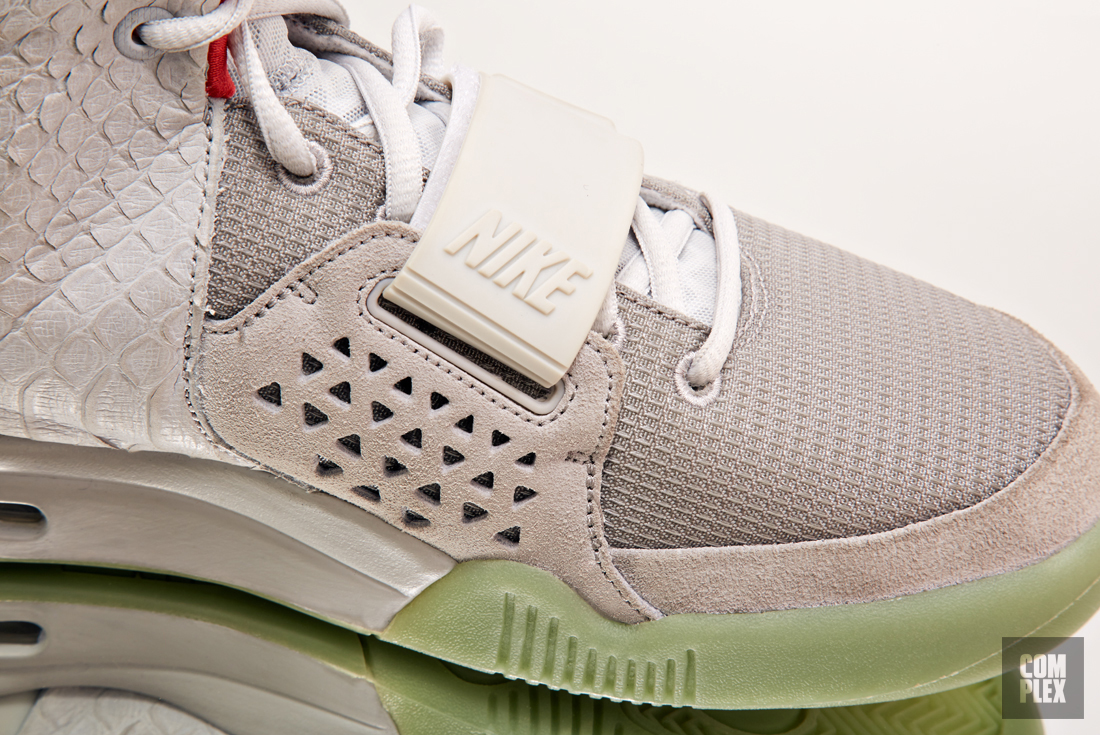
West’s move to Adidas was part of a larger shift in footwear. Nike’s basketball signature models’ prices were rising, but the buying public’s desire for these sneakers was declining. A shift to “athleisure” products was gaining steam — consumers were more becoming interested in comfortable clothing with cleaner, closer cuts. It was a mode of dress with Kanye at its forefront. “I think they were short-sighted in understanding where the culture was going, which is hard to admit because it's Nike,” Golliff says. “They basically created this culture. But looking where they stand five years later, and how they are struggling to compete with culturally relevant products that strike the consumer emotionally, you can see they were out of touch and are now playing catch up.”
While it’s easy to suggest Nike should’ve been more willing to listen to Kanye’s wishes, their respective visions simply weren’t aligned. “I'm a big believer of right time, right place,” Golliff says. “Nike wouldn't change line plans for Kanye, because truthfully they aren't built for flexibility. They are a machine, and it's hard to stop or slow down plans that have been in place for years and sometimes a decade. That's true of any corporation. And you can't fault them for that. However, that unwillingness to adapt is showing now.”
Along those same lines, what West and the general public may not recognize is that, it doesn’t necessarily behoove Nike to attempt to move mountains at the behest of a celebrity. Collaborations are coming about more frequently, and their impact doesn’t always justify the means necessary to make them successful. “It helps, but at times it only moves brands’ cache a bit,” Witherspoon says. “Collaboration and special projects often cause a ripple in planning the larger business, because retailers have to deal with the camp-outs, and the brands deal with desires from retailers to pump up the occasion. In the larger scheme of things it doesn't make sense, because there is no guarantee that you will even renew the business opportunity.”
Whatever the case may be, it’s hard to knock the success West and Adidas have managed to create with Yeezy Boosts. Each model and colorway tends to sell out as soon as they’re released, and trying to score a pair on the secondary market means spending several hundred dollars at least. The shoes have the kind of buzz that most companies would kill for, which leads many people to give Kanye credit for helping revitalize Adidas’ relevance in the marketplace. And he’s now able to get his dreams out there with the support of a company who believes in his vision as a designer. “It was the beginning to the end of a great partnership for Kanye and Nike,” Tomamichel says. “However, it breathed a whole new life into Adidas and has since made the market really be re-examined. Without the Yeezy 2 and the issues the parties faced, we may never have seen the emergence of Adidas.”
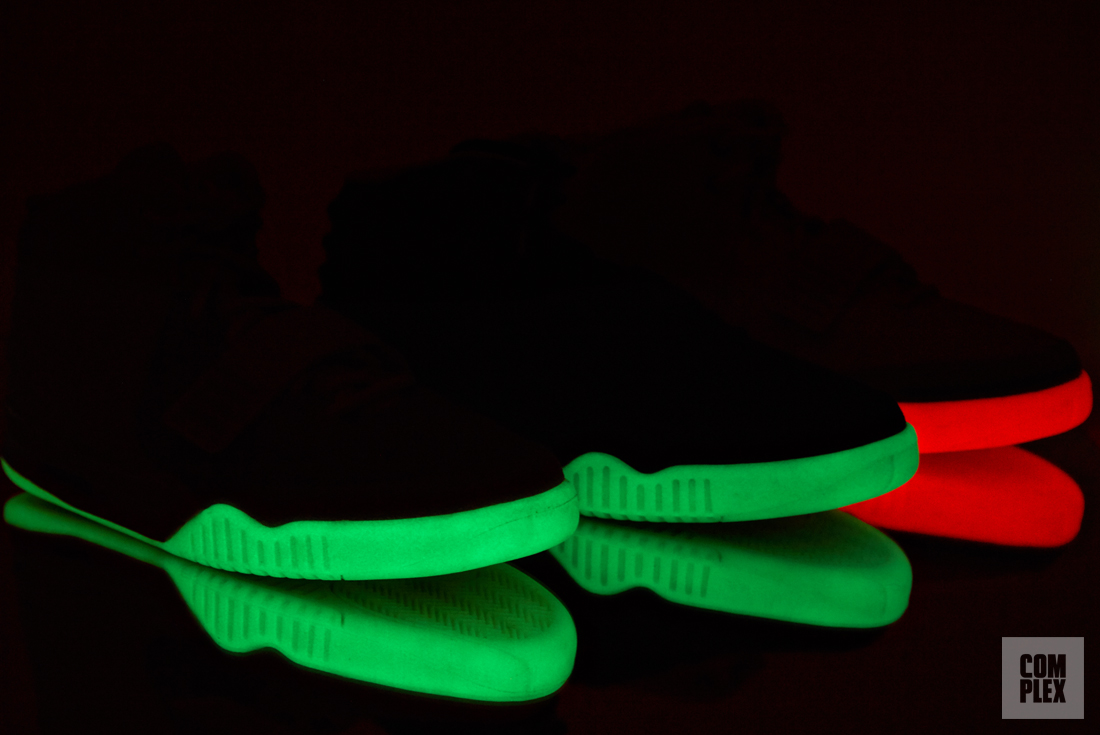
In the long run, both parties have managed to survive, as has the Yeezy 2 itself. The fallout didn’t do anything to taint how most footwear enthusiasts view the model. In fact, it is still considered to be a peak purchase for collectors, as pairs on the secondary market are still priced as high as several thousand dollars. For many, the shoe is still a grail, since quantities were initially limited and the split between West and Nike ultimately means the model’s run stops at the two versions and the handful of colorways in which they were released.
Perhaps more than anything, the Yeezy 2 and its June 9 birthday will be remembered for the change they helped usher in for footwear and strategies used by brands to bring consumers in droves. “I worked for an agency prior to Nike and we had a few other brands as clients,” Witherspoon says. “They all wanted to do the same thing Nike had done. They all wanted to create a seamless connection between lifestyle and sport but no one has really done it the same way.”
If things had worked out between Nike and Kanye, the sneaker world might be completely different now, but we'll never know. "At the time, he was one of the biggest music stars in the world and Nike was in the midst of a strong run in terms of products they were releasing. If they had remained partners, what could the future have held for ‘Ye and Nike? If both parties could have worked it out, and Nike figured out a way to monetize the 'movement,' I think Nike would have been even bigger than it is today," Yu says.
While it’s true they haven’t matched the complete furor created by Nike, West and Adidas have cultivated a strong, rabid following of their own. And they’ve kept buyers wanting for more, release after release, just the way Kanye always envisioned it would be.
